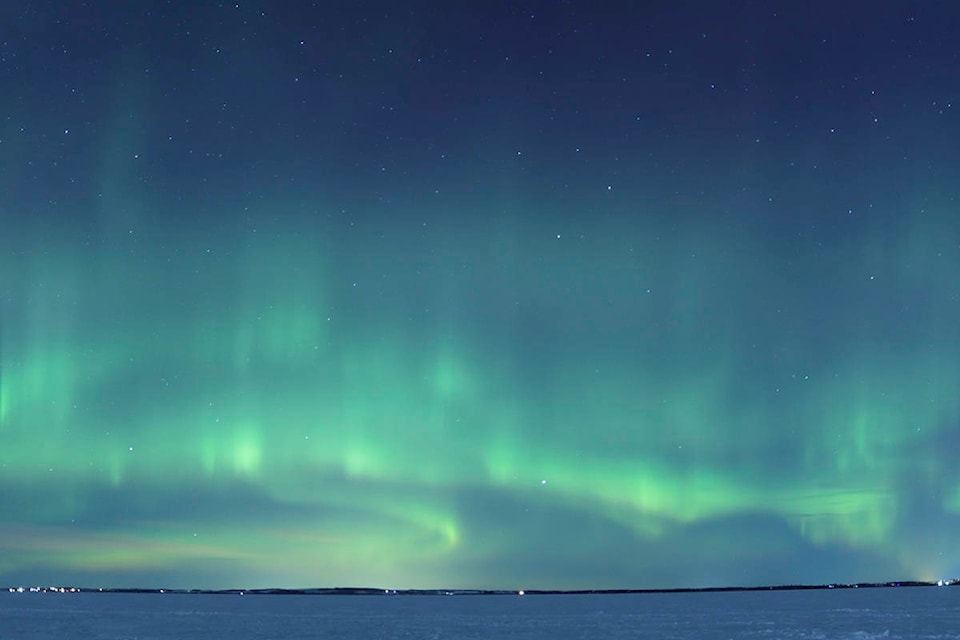Jeff Adams loves summer storm chasing, only in the winter it looks a little bit different.
Adams, a Red Deer native who has been chasing storms and taking photos of them for over a decade, decided a few years back he wanted to try his hand at capturing an Aurora Borealis, or the northern lights.
It’s become a healthy obsession over the last six years and Friday, he was able to capture some stunning images over Gull Lake.
“I went out to there about 9 o’clock and sat out at the lake. It’s all about patience and time. I sat there for about an hour, set up my camera and about 11 o’clock that’s when the auroras started to appear,” he said.
“For about 15-20 minutes, they really started to appear, that’s when the brunt of the solar storm hit the magnetic poles.”
His winter – or occasionally summer passion started during his day job, as a long-haul trucker. Routine trips up to the northern parts of Alberta allowed him to see the lights dance across the sky, just off the highway. He got a camera and started shooting, learning more and more as he went.
Adams says that there are a number of factors that lead to a good aurora photo, but the main keys are a good camera, weather, timing and patience. It needs to be a clear night and most often the best shots come between 10 p.m. and 3 a.m.
“The thing you need is no moon, clear skies and if you want to to go and sit outside all night, half-decent weather,” he said.
“(Friday) night was perfect, except for the moon.”
Lady aurora decided to give us a sneak peek this evening of what is possibly coming in the form of a G1 geomagnetic storm later this weekend. Photos taken between 11:00PM and midnight at Gull Lake, Alberta. #ABStorm #StormHour pic.twitter.com/N7lXJQLOeo
— Jeff Adams (@jeffmadams) February 20, 2021
He also uses an app called Space Weather Live, which can predict how powerful the aurora will be, up to 27 days in advance. The best info usually comes about 10 days before the storm, but even still, there’s a chance you miss out – which is where the patience comes in.
“It could happen at this time or it could happen at this time, you don’t really know. You have to be there to see it,” he said.
“Every storm puts out a different display and what you say last night, won’t happen tonight. That whole sky could turn green and red tonight and then the next night, you see green off in the distance.”
In central Alberta, he said the three best locations to see the northern lights are at Gull Lake, Buffalo Lake or Dry Island Buffalo Jump Provincial Park. He added there is a decent chance you can see the lights are long as you are 15-30 minutes away from a city.
Adams said these days, especially during the COVID-19 pandemic, he can share a little joy for people with the photos he’s taking of the Aurora’s.
“If I can take something off people’s mind for five minutes where they can look at those pictures and go, that’s nice – that’s gorgeous, I needed to see that,” he said.
“It’s a hobby, but I try and show people if you’re having a bad day, take a look at these. That’s my philosophy.”
You can see more of Adams’ work on Facebook at www.facebook.com/DarkNightPhotos. You can also follow him on Twitter and Instagram at jeffmadams.
Send your news tips
Like us on Facebook and follow us on Twitter
